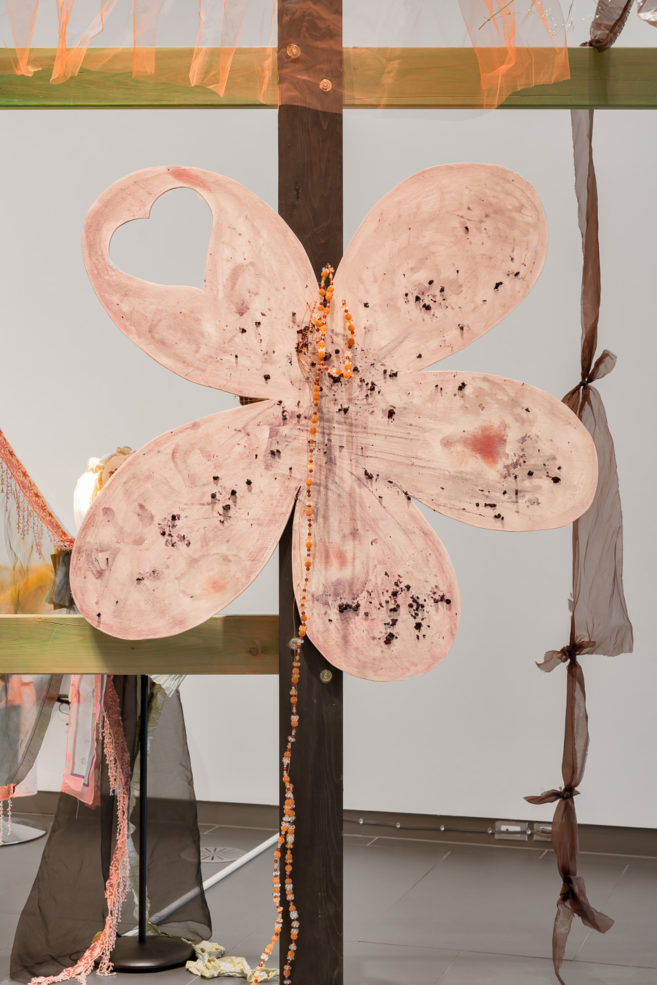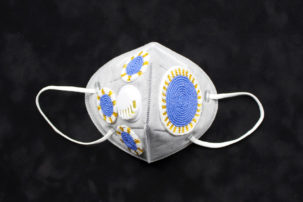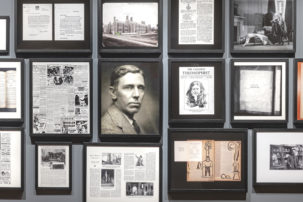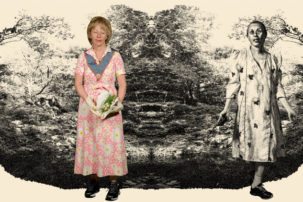The borders around “the North” and “the Atlantic” are both over- and under-defined. Funding bodies and high-profile awards, like the Sobey Art Award, often reinscribe hard lines around regional definitions, lumping the North with the Prairies and the Yukon with the West, thereby dividing off sections of Inuit Nunangat simply to connect Northern communities with more densely populated Southern regions. “Atlantic” is often defined by the border of the provinces facing the Atlantic ocean, although the unceded territories of the Beothuk, the Mi’kmaq and the Wolastoqiyik as well as of Inuit, Innu and Southern Inuit of NunatuKavut extend well beyond those borders. The systems that govern the Canadian art world lump together territorial and artistic ecologies while simultaneously facilitating exclusion. In an effort to move beyond these borders, I’m interested in establishing a continuum of arts spaces in the Atlantic and Inuit Nunangat by highlighting exhibitions and practices that cross these overlapping territories.
The impetus for this list was Canadian Art’s recent article “What to See in 2020.” I came up empty when I scanned it to find exhibitions near me. As a writer and curator based in Halifax, I look to this type of article every year to determine which exhibitions to consider reviewing and where to plan my travel. I was surprised that Canadian Art didn’t highlight any arts spaces in the regions defined as North or Atlantic, given that the website typically takes geographic representation into account. In response, here are my suggestions for what to see in 2020.
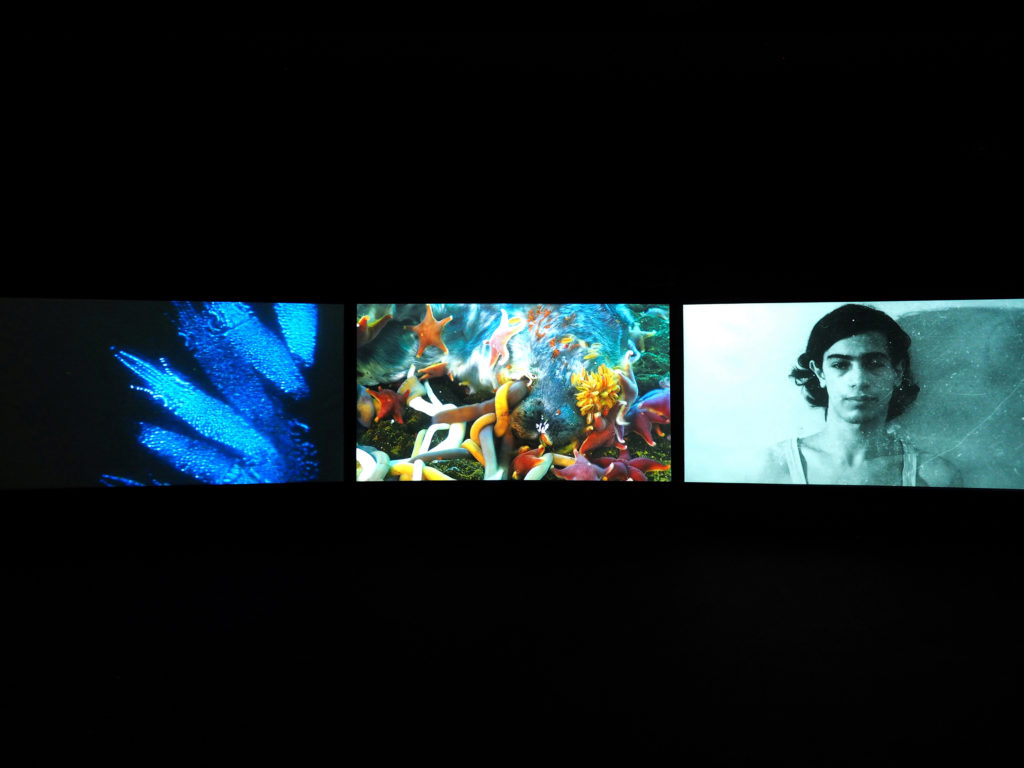 John Akomfrah, Vertigo Sea, 2015. Three-channel HD colour video installation, 7.1 sound, 48 minutes 30 seconds. Collection of the National Gallery of Canada.
John Akomfrah, Vertigo Sea, 2015. Three-channel HD colour video installation, 7.1 sound, 48 minutes 30 seconds. Collection of the National Gallery of Canada.
John Akomfrah
What Carries Us: Newfoundland & Labrador in the Black Atlantic
The Rooms, St. John’s
February 28 to April 26, 2020
Two exhibitions at The Rooms this winter will investigate histories of migration and Black diaspora in Newfoundland. “Vertigo Sea” by UK artist John Akomfrah consists of a three-channel film (on loan from the National Gallery of Canada) that cycles through montages of seascapes, nuclear explosions and migratory movements, incorporating historic documentary footage from around the world, including clips of the Newfoundland coast. On a local scale, “What Carries Us: Newfoundland & Labrador in the Black Atlantic,” curated by Bushra Junaid and featuring works by Sonia Boyce, Sandra Brewster, Shelley Miller and Camille Turner, explores the province’s role in the international trade system that moved enslaved people and goods across continents.
Germaine Arnaktauyok
Nunatta Sunakkutaangit Museum, Iqaluit
February 15 to April 2020
This exhibition of new prints by Germaine Arnaktauyok explores the aesthetics of Inuit femininity and beauty, depicting tunniit (tattoos), braid patterns and ivory-carved women’s combs. As an author and illustrator of books published by Inhabit Media, who co-organized the exhibition, Arnaktauyok draws vivid parallels between Inuit design and traditions of storytelling.
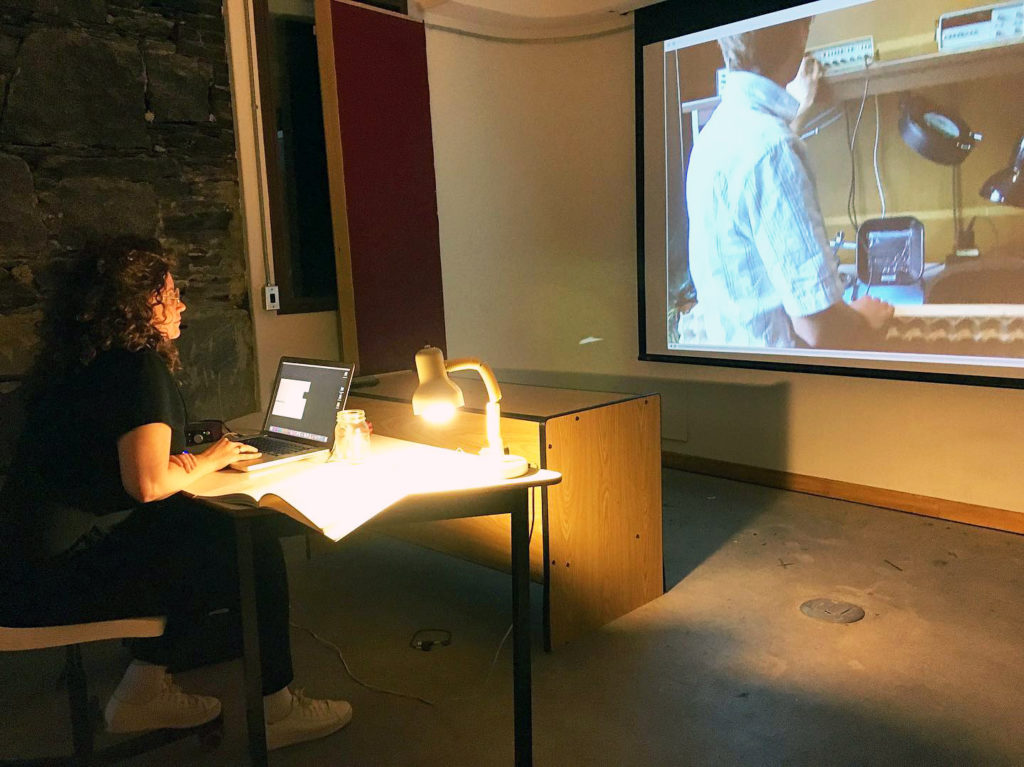 Veronica Simmonds reviewing footage from the archives of Centre For Art Tapes. Courtesy CFAT.
Veronica Simmonds reviewing footage from the archives of Centre For Art Tapes. Courtesy CFAT.
The More Things Change… Reflections on 40 years of the Centre for Art Tapes
Dalhousie Art Gallery, Halifax
March 27 to May 10, 2020
This 40th anniversary exhibition in honour of the Centre for Art Tapes (CFAT) promises to destabilize the centre’s control of their legacy—they invited Life of a Craphead, Divya Mehra, Raven Davis and Veronica Simmonds to be artists-in-residence and asked each to respond to CFAT’s history by examining the gaps in the archives. Removing the pomp from their own institutional celebration, CFAT’s risk-taking exhibition will be worth visiting, whether or not the risk pays off.
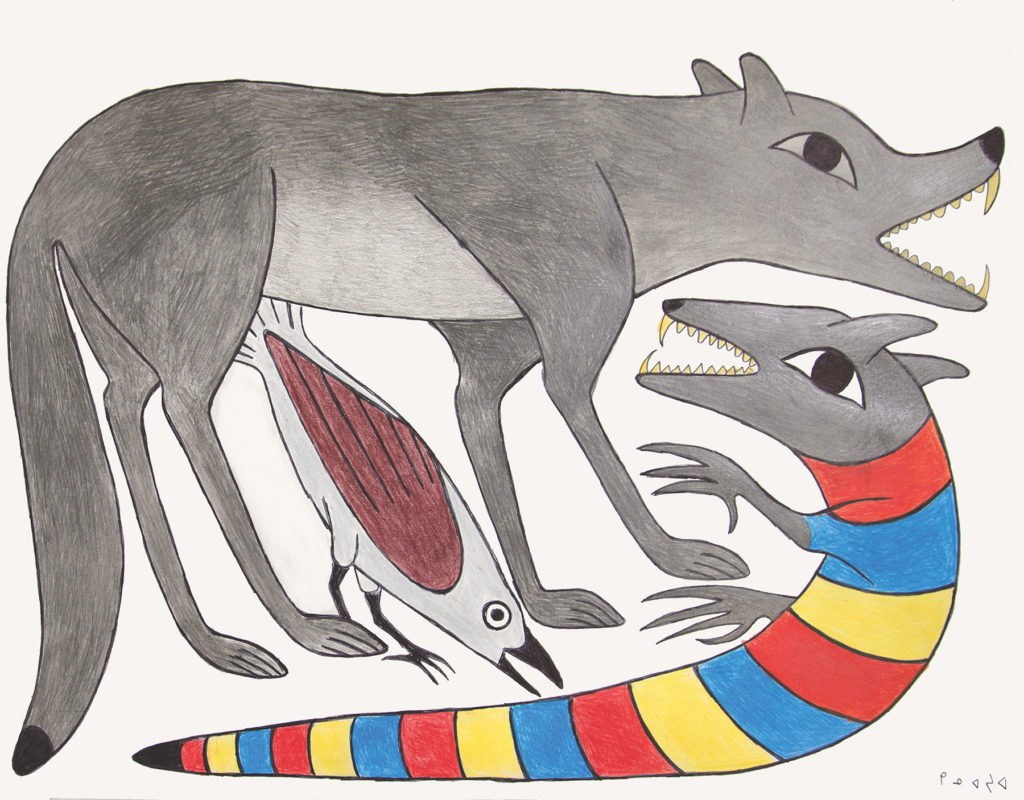 Kenojuak Ashevak, Serpentine Wolf II, 2010. Ink and coloured pencil on paper, 50 x 65 cm.
Kenojuak Ashevak, Serpentine Wolf II, 2010. Ink and coloured pencil on paper, 50 x 65 cm.
Kenojuak Ashevak
Klondike Institute of Art & Culture, Dawson City
May 28 to July 31, 2020
First presented at the Kenojuak Cultural Centre in Cape Dorset, “Life and Legacy” is the largest survey of Ashevak’s work created by an organization in the Canadian Arctic. During its tour, community leaders from Cape Dorset will tune in by video conference, creating digital channels for exchange between arts spaces and prioritizing connectivity as it travels.
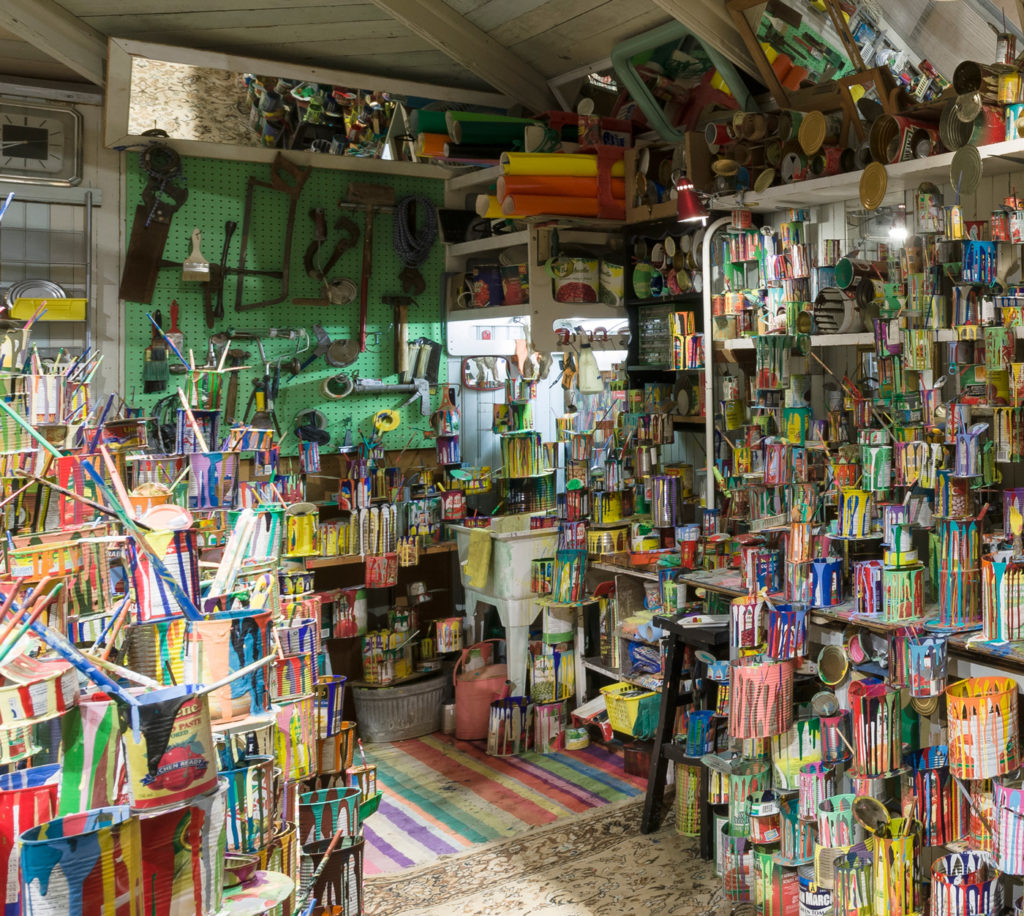 BGL, Canadassimo, L'Atelier, 2017 (detail). Salvaged wood, acrylic, tin cans, found objects. Photo: MNBAQ, Idra Labrie.
BGL, Canadassimo, L'Atelier, 2017 (detail). Salvaged wood, acrylic, tin cans, found objects. Photo: MNBAQ, Idra Labrie.
BGL
Confederation Centre Art Gallery, Charlottetown
June 13 to September 27, 2020
The Quebec City artist collective, known for their provocative installations, will re-install elements of their 2015 Venice Biennale exhibition alongside new work that responds to the architecture of the site. This exhibition, titled “Two Thumbs Up: Arts and Crafts,” promises to offer a maximalist, distorted and tongue-in-cheek interpretation of a brutalist building that commemorates confederation.
Couzyn van Heuvelen
Owens Art Gallery, Sackville
August 8 to September 30, 2020
Couzyn van Heuvelen is known for reimagining Inuit hunting and fishing tools through playful and monumental distortions of scale. By inflating the scale of fishing lures, for example, and creating avataq using foil balloons rather than sealskin, van Heuvelen redefines what innovation means for Inuit technologies. “BAIT,” curated by Ryan Rice and organized by Artspace in Peterborough, travels to the Owens Gallery this summer after being shown at Grunt Gallery in Vancouver as well.
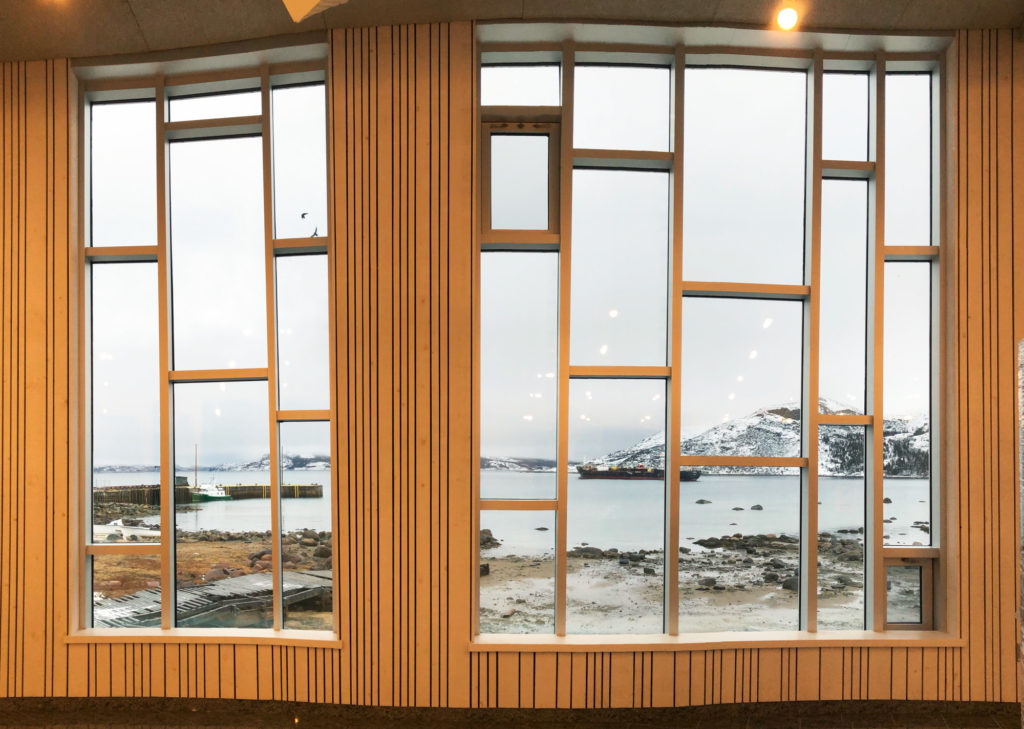 A view from Illusuak Cultural Centre. Photo: Brenda Jararuse.
A view from Illusuak Cultural Centre. Photo: Brenda Jararuse.
Illusuak Cultural Centre / Illusuak IlikKusiligijingita SuliaKapvinga
Nain, Nunatsiavut
Ongoing
After nine years of fundraising, design and construction, the sealskin ribbon cutting for the Illusuak Cultural Centre took place in November, 2019. Todd Saunders, architect of Fogo Island Inn, designed it to emulate the soft form of a sod house. Since the Nunatsiavut Government was established after the success of their 2005 land claim, the self-governing Labrador Inuit have worked toward commissioning the space. Throughout 2020, the Illusuak Cultural Centre will show five exhibitions from the five Inuit communities in Nunatsiavut, while introducing new Inuktitut-language classes.
This article was corrected on February 6, 2020. The original incorrectly stated, based on very early information, that María Magdalena Campos-Pons was projected to be part of “What Carries Us” at the Rooms. We regret the error.

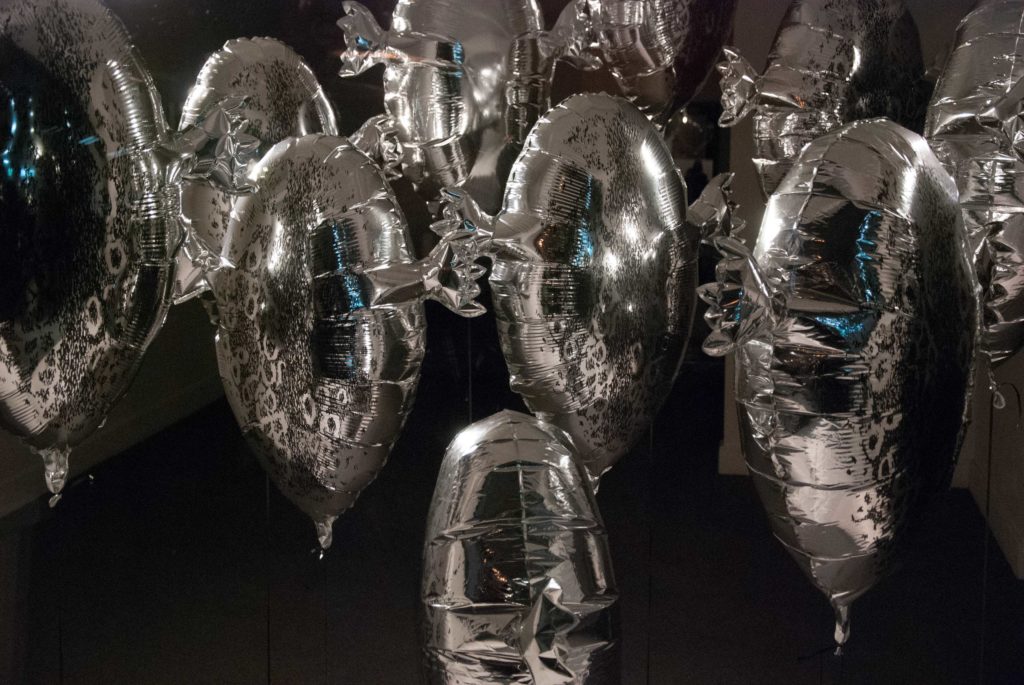 Couzyn van Heuvelen, Avataq, 2016. Screenprinted Mylar, ribbon, aluminum, helium.
Couzyn van Heuvelen, Avataq, 2016. Screenprinted Mylar, ribbon, aluminum, helium.
